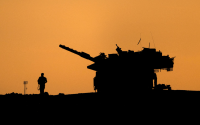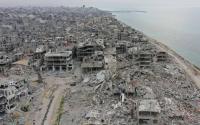13 December 2004Vikram Dodd
Two of Britain's foremost forensic pathologists have dismissed the claim by paramedics that the weapons expert David Kelly may not have died by cutting his wrists.
But other medical experts querying the Hutton report's conclusion that Kelly killed himself by cutting the ulnar artery in his left wrist have taken heart from the claim.
Yesterday the Observer reported Dave Bartlett and Vanessa Hunt, both paramedics with more than 15 years' experience, as saying that there was too little blood at the scene compared with other incidents they had attended in which people had cut their wrists.
The pair, the first paramedics on the scene, held a press conference yesterday at which they said that what they had seen was "inconsistent" with the forensic pathologist's report prepared for the Hutton inquiry.
Ms Hunt told the Observer: "There just wasn't a lot of blood ... When somebody cuts an artery, whether accidentally or intentionally, the blood pumps everywhere."
Kelly was found dead on July 18 in woods near his Oxfordshire home. He had told the BBC reporter Andrew Gilligan that the government's dossier on the danger posed by Iraqi weapons of mass destruction was flawed.
Chris Milroy, pathology professor at Sheffield University, said: "I've seen nothing yet that proves anything other than Dr Kelly took his own life in the way the Hutton inquiry concluded, by cutting his wrists and taking an overdose."
Kelly's heart condition made him unable to withstand loss of blood to the extent that a fit person could. The death was "multifactoral": due to the cut to his wrist, a toxic dose of drugs and heart disease. The dextropropoxyphene he took was itself toxic to the heart.
Prof Milroy added: "It is difficult to estimate blood loss from looking at the scene."
Professor Guy Rutty, of Leicester University, said: "The blood could have gone straight into the ground."
Both said paramedics were trained and expert in saving lives, not in the forensic examination of scenes of death, which required a wholly different set of skills and expertise.
But in a statement from the Kelly Investigation Group, an orthopaedic and trauma surgeon, Bill McQuillan, said: "The blood spurts out with each heartbeat and may reach distances of six feet or more.
"If this was the case with Dr Kelly, his clothes, face and any surrounding structures would show evidence of that with the blood scattered as from a watering can ...
"When you put this evidence together with other pieces, including the fact that Dr Kelly's body appears to have been moved from slumped against a tree to flat on its back - and we know photographs are in existence to prove this - then it illustrates the need for a full inquest where all this can be properly investigated."
At the Hutton inquiry Ms Hunt said she had not seen the wound on Kelly's wrist, nor had she examined the ground for blood or blood loss.
There are no plans to hold an inquest into Kelly's death: the Oxfordshire coroner decided a further hearing would be superfluous after the Hutton inquiry.
http://www.guardian.co.uk/hutton/story/0,13822,1372404,00.html?gusrc=rss






